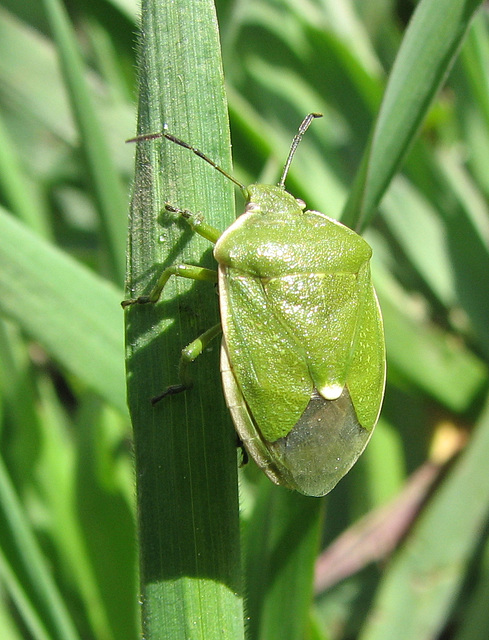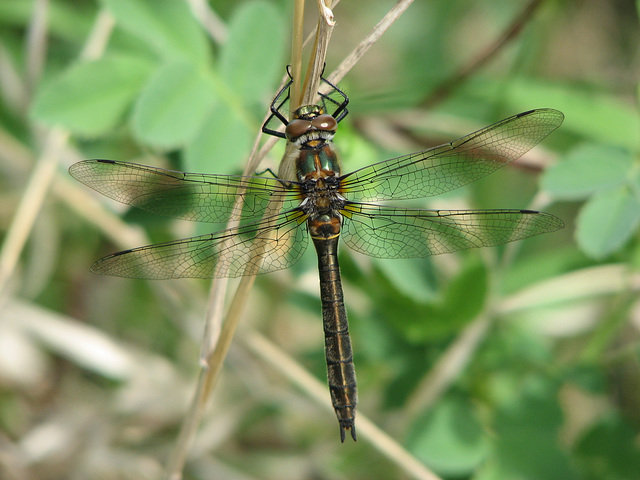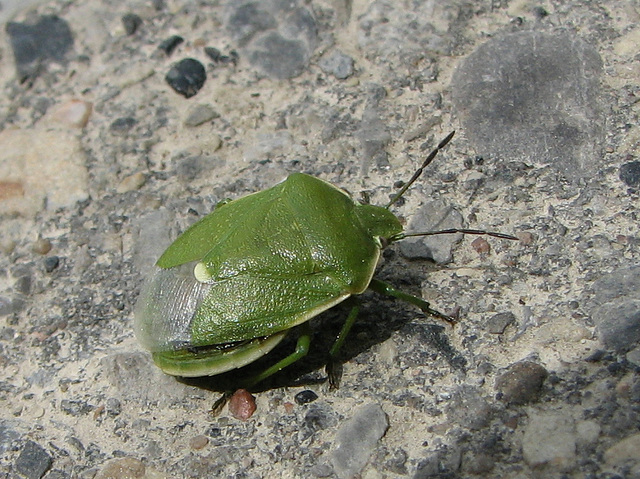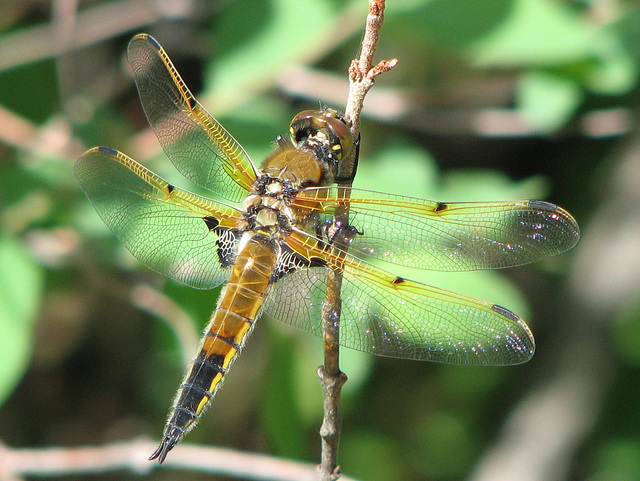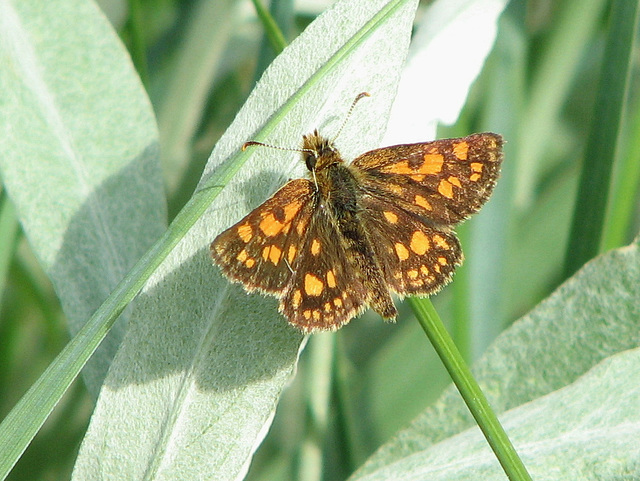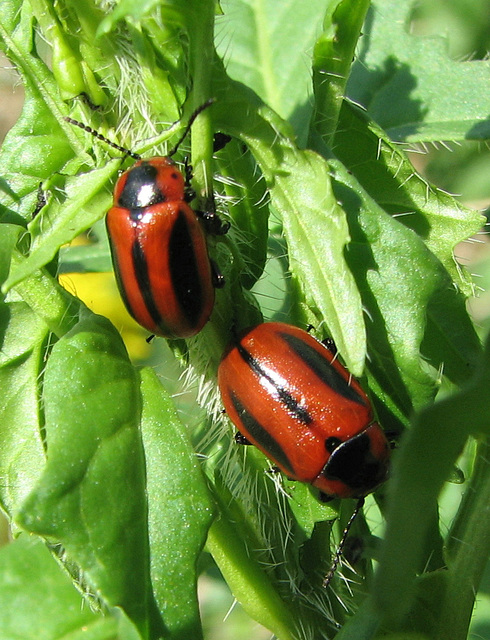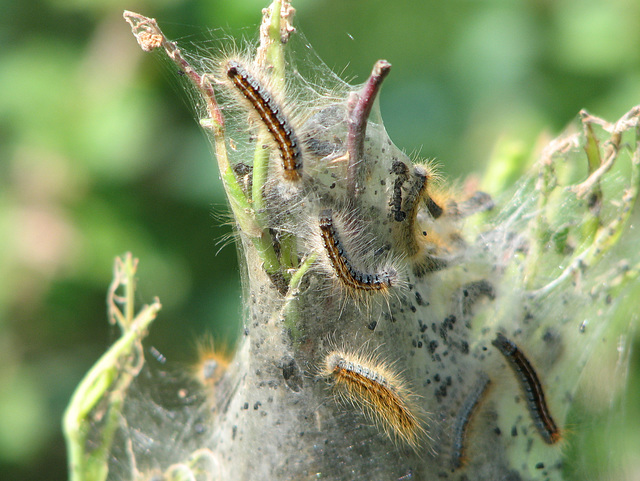
Insects of Alberta 1
27 May 2007
Big Green Stink Bug
We came across this Stink Bug this afternoon, as well as another similar one on a Golden Bean flower. I was so happy, as I believe this was my first insect of the year. Thanks, Doug, for the ID! I had come to pretty much the same conclusion after checking several web sites.
05 Jun 2007
American Emerald
A full photo of this dragonfly, seen this afternoon down in the Weaselhead. You might enjoy seeing greater detail at the large or original size. This was identified for me by John Acorn, author of many nature books.
05 Jun 2007
American Emerald close up
I don't remember ever seeing a dragonfly like this one before. It was identified as an American Emerald by John Acorn, author of many books and TV series.
05 Jun 2007
Big Green Stink Bug
This little Big Green Stink Bug was crawling across the main path when I went on a walk yesterday afternoon. I knew what it was immediately, as I had seen two of them on a Botany walk recently.
07 Jun 2007
Network
I photographed this Dragonfly this morning at Griffith Woods. I think it might be a Four-spotted Skimmer (Libellula quadrimaculata).
07 Jun 2007
Stop and smell the roses
I was on a trip this afternoon south of the city, walking some interesting hills at a place called Nodwell Sanctuary. I noticed this rather beautiful insect on a wild rose, but have never seen an insect like this before and I don't know what it is. Just love that shiny green.
07 Jun 2007
Unidentified butterfly
I was on a trip this afternoon south of the city, walking some interesting hills at a place called Nodwell Sanctuary. We saw this small butterfly, but I'm not sure what its ID is.
07 Jun 2007
Red Turnip Beetles
I was on a trip this afternoon south of the city, walking some interesting hills at a place called Nodwell Sanctuary. A first, distant glimpse made us think we had come across some Ladybugs, but we quickly realized we had something else.
The Red Turnip Beetle is a native North American insect. Adult beetles are bright red with black patches on their heads and three distinct black bands running down their backs.
Crop injury in canola, rapeseed, or mustard fields usually occurs along field margins when beetles move in after cruciferous plants in adjacent fields are either consumed or controlled. Adult beetles normally walk to the new food source. Invading beetles are usually concentrated in a moving front only a few metres wide.
07 Jun 2007
Tent caterpillars
When we were out on an afternoon trip south of the city yesterday, we came across several masses of these Tent caterpillars on bushes. Really nicer to see from a good distance rather than close to!
"If you’ve ever witnessed a huge outbreak of tent caterpillars, then you are probably not overly fond of these insects. In some areas, cyclical outbreaks of these large caterpillars can defoliate everything in sight, and coat walls and roads. It’s just plain icky. It is however a natural process and healthy plants recover the loss of leaves readily. In Alberta, such outbreaks are relatively uncommon, and not of mythical proportions.
The moths are also fairly large, stout and hairy. The forewings are an even yellow, brown or grey with lines of colour across the wings. The wings are held rooflike over the body. The feathery antennae are held apart, framing the head. Adults do not feed, but are readily attracted to lights.
There are perhaps half a dozen species of these moths in Alberta, the best-known being the Forest Tent Caterpillar. Both the related tent-building Eastern and Western Tent Caterpillars might also be found." Information by Nora Bryan at www.weaselhead.org .
Jump to top
RSS feed- Latest items - Subscribe to the latest items added to this album
- ipernity © 2007-2024
- Help & Contact
|
Club news
|
About ipernity
|
History |
ipernity Club & Prices |
Guide of good conduct
Donate | Group guidelines | Privacy policy | Terms of use | Statutes | In memoria -
Facebook
Twitter

